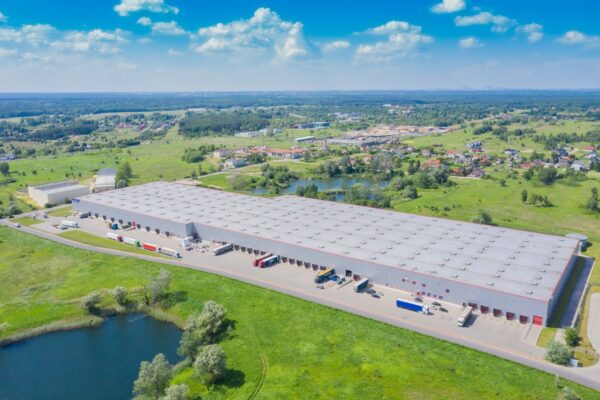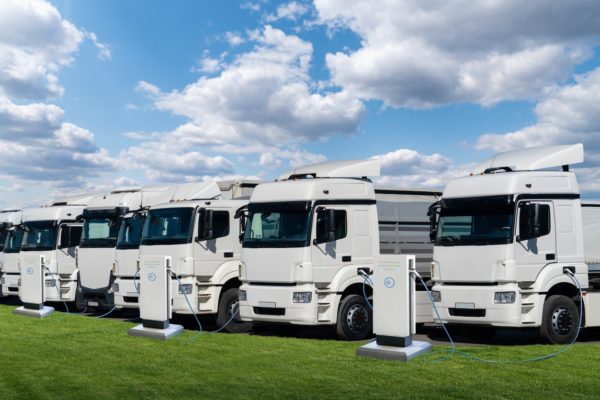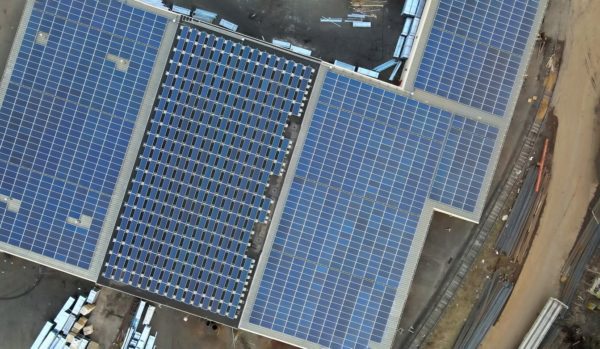
The South Coast Air Basin, Salton Sea Air Basin, and Mohave Desert Air Basins all voted in favor of the WAIRE program being implemented right away by the Southern California Air Quality Management District (SCAQMD). The entirety of Orange County, as well as sizable sections of Riverside, Los Angeles, and San Bernardino Counties, are included in this region.
All warehouse proprietors will be expected to submit dimension and occupant statistics for their storage facilities exceeding 100K SF, situated within the SCAQMD-controlled region, by September 2021. Compliance will continue to be carried in starting in 2022.
WAIRE Program and its Essence

The Warehouse Actions and Investments to Reduce Emissions (WAIRE) Program works to protect the environment. If we take adequate steps to protect the ecosystem, it could be possible to stop global warming. This is how the law contributes to lowering harmful gas emissions and preserving the environment’s well-being. Counties like Los Angeles, Orange County, and Riverside County are the focus of this project.
The reduction of gasoline and nitrogen oxide emissions is the main objective. The WAIRE effort may improve the overall human safety level for everyone in those counties. The warehouses must stick to the quality standards specified by the South Coast Air Quality Management District while selecting ecologically suitable substitutes (South Coast AQMD).
In May 2021, the WAIRE effort was started in response to alarming data that showed hazardous amounts of nitrogen oxide.
It is also referred to as Rule 2305, which entails a regulatory initiative. This regulation aims to reduce particle and nitrogen oxide emissions on a local and state scale. It simplifies minimizing emissions caused by warehouses and the transportation sources that rely on them. It also aids in meeting air quality laws.
This law applies to owners and operators of warehouses within the South Coast Air Quality Management District (South Coast AQMD) limits. Another condition is a minimum of 100,000 square feet of internal floor area in a single construction.
Compliance Timeline

Approximately 2,902 California warehouse owners and 3,995 warehouse operators are expected to be impacted by this choice. A major barrier to compliance for managers and owners will be the commercial feasibility of renewable energy fleets. The highest WAIRE point value for automobiles with low emissions has yet to be discovered. While Class 4-7 low and neutral-emission trucks are currently widely viable as distributor and mass transit vehicles, moderate to large freight eco-friendly vehicles will be commonly available in 2021 or 2022.
This decision is projected to affect 2,902 warehousing proprietors and 3,995 warehouse operators. The economic potential of renewable energy vehicles will be a significant obstacle to adherence for owners and managers. There needs to be data on the optimal WAIRE point number for low-emission vehicles. While commercially produced low and net pollution, Class 4-7 trucks are presently accessible as mass transport vehicles.
Once storehouse managers and owners have emission-friendly fleets, they may earn points for each trip a carbon pollution vehicle takes into or out of their location, in addition to the points they purchased for the vehicles. For warehouse operators or owners seeking compliance, the alternative is to purchase the correct amount of WAIRE points under the “mitigation fee alone” choice. According to the SCAQMD Board, this strategy would cost storage managers and proprietors about $.83/SF in the initial year of the initiative, rendering it the most expensive alternative.
This move attempts to reduce pollution in one of the state’s most polluted locations. According to supporters of Source Regulation 2305, this rule will reduce NOX emissions by 10-15% by 2031. The region could meet the EPA’s existing, nationally mandated air quality standards with this reduction. Check out the official website for additional details.
WAIRE Points Compliance Obligation

A warehouse operator must earn the necessary WAIRE Points as of the Beginning Reporting Date in Table 1. Only activities and investments made within the compliance period can generate WAIRE Points. Only warehouse owners who run at least 50,000 sq. ft of the warehouse for logistics operation and work in facilities with a maximum allowable floor space of 100,000 square feet for warehouse operations must earn WAIRE Points.
Complying with Rule 2305
The warehouse must have adequate WPOC to comply with regulation 2305. This is the quantity of money that each storehouse must acquire or earn. To make the correct number of points, you should fully grasp how they are computed.
The truck travels are all one-way journeys; during these journeys, vehicles or tractors transport items from the storehouse to the designated site. The journey begins and ends when the truck enters or exits the premises. Every journey from a truck counts as two trips. All trips conducted during the compliance period are counted as Weighted Annual Truck Trips under Rule 2305.
To begin with, any warehouse operators who come within the standards, such as those within 100 miles of California counties with 100,000 square feet of land in one structure, must submit reports to the South Coast AQMD. This report must include many facts, such as all warehouse activities and their conformity with Rule 2305.
According to the exclusive requirements, all documents must be as fresh as feasible and no older than seven years. Furthermore, they must be handed to the SCAQMD during business hours. Here is all the information you need about compliance standards in various situations.
What Does Equipment For Alternative Energy Generation Mean?

Renewable energy production technology creates clean energy using renewable natural resources or technical processes. You may, for example, use solar and wind energy.
People gain by employing natural power rather than costly and risky energy production technology. In addition to transportation, they used equipment for lighting, heating, and other purposes. Renewable energy is generally regarded as the most recent technology. Meanwhile, solar energy has benefited homes and business owners for millennia. Over the last 500 years, people have become more reliant on cheap and polluting energy sources such as coal and gas.
Wind Energy Source
Going back to wind turbines seems like it could be more appropriate in light of current technology and ingenuity. The huge turbine blades rotate and charge electric generators with the strength of the powerful wind. The generators can then be utilized to create electricity. However, many storage facilities continue to use this technology to generate alternative energy.
Wind energy, which generates 9.2% of the country’s power, is one of the least expensive energy sources in the country. Wind turbines may be found everywhere with strong winds, such as mountain peaks, broad plains, and even open water.
Solar Energy Source
Solar energy is not as harmful to the environment as other sources. It does not contaminate the environment or contribute to the generation of greenhouse gases. Furthermore, it requires very little water for maintenance; nuclear power facilities require around double the power.
People have utilized sun energy for hundreds of years to dry crops, keep them warm, and produce crops. It is an efficient method of producing energy since the power that drops to the earth in an hour may fuel the planet for a year. You will use the utility company’s energy less regularly if you generate electricity.
It will also reduce your energy expenditures, and you may earn cash by selling any excess electricity back to the grid. You can reduce the amount of your green investment by taking advantage of available solar panel grants.
Hydroelectricity Power
Wind energy is expected to overtake hydropower as the nation’s major renewable source soon. Hydropower generates electricity by turning a battery’s turbine blades with water—often fast-moving water in a vast river or rapidly dropping enormous volumes of water from a high point.
This energy-generating device saves massive amounts of grid electricity while providing environmentally friendly electricity. However, using hydroelectric power to create electricity without an electricity network is expensive.
Coldwell Solar Allows Warehouse Operators to Leverage Solar

Coldwell Solar provides solar-powered energy generation alternatives for warehouses. Consult our experts to design and carry out the conversion of solar energy-producing equipment. Our knowledgeable personnel can create a unique and personalized warehouse plan that conforms to the WAIRE Program.
Finding alternative power sources, like solar energy, is a wonderful method to minimize your expenditures as a warehouse operator if your firm requires a lot of electricity to drive equipment and interior and exterior lights.
Get Help Complying with the WAIRE Program
The South Coast AQMD established the WAIRE Program to minimize and eventually eliminate hazardous gases such as nitrogen from warehouses. WAIRE’s governing board created a scoring system to encourage workers and owners to improve the environment. This technique encourages facilities to use environmentally friendly equipment and vehicles by granting points.
Solar energy solutions from Coldwell Solar make it simple for warehouses to meet WAIRE implementation guidelines. Using alternative energy-producing equipment may significantly cut nitrogen emissions, eventually improving the environment. As a result, warehouses in southern California are focused on integrating solar-powered power sources and contributing to the environment’s betterment.

